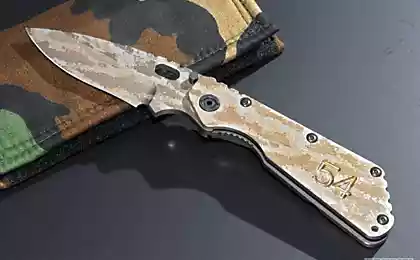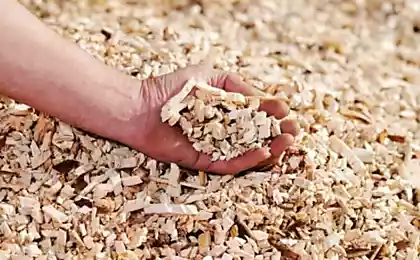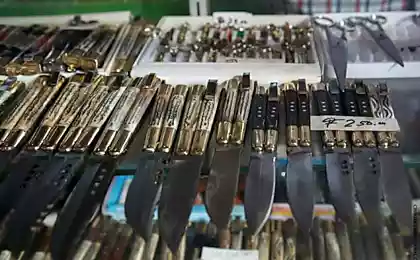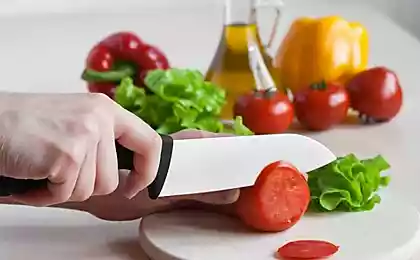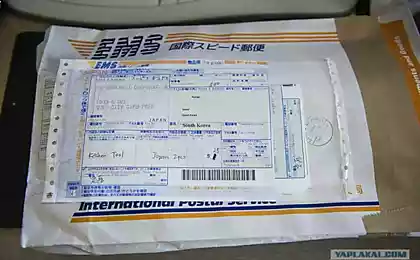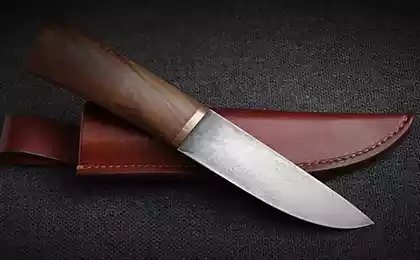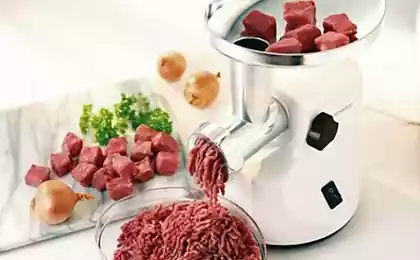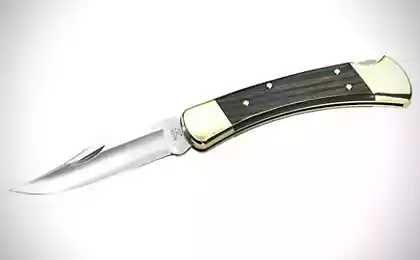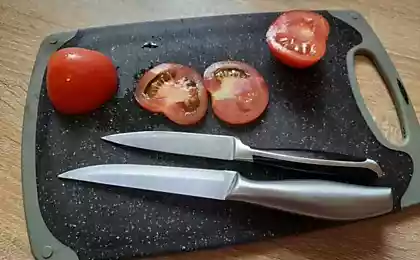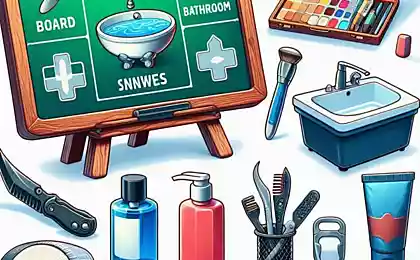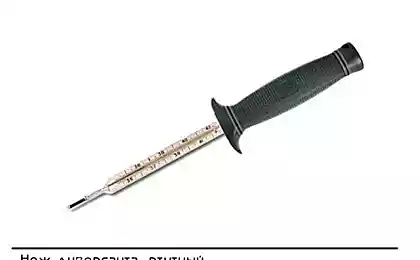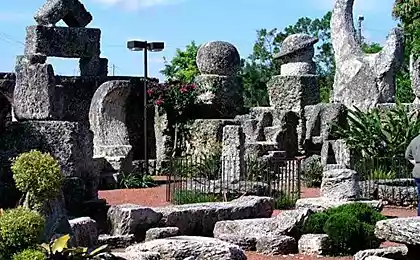682
What You didn't know about the knives
The earliest Knives known since the Paleolithic era. The first knives were made of stone (often flint) flakes, acquired subsequently are almond-shaped. Later the knives started to attach wooden and bone handles. This rock, as the obsidian was possible to obtain the sharpest Knives is quite a complex shape. Also widely used Knives made of bone. About five thousand years ago man learned to receive and process the metal and he started to make Knives from copper and bronze. In South America, the Knives are also made of gold.
With the early iron age, iron gradually replacing the Knife blades, made of bronze. With the beginning of the industrial revolution cottage industry factory knives is replaced, changing the design and materials of blades. One of the important criteria are effectiveness and cheaper cost. The flowering begins folding knives. Very soon, the old traditional centers of production knives are added, such as Sheffield in England, Solingen in Germany, Mora in Sweden, Zlatoust in Russia.
Part of the knife
The knife consists of a blade (1) and the handle (2).
If blade to its end of the wedge converges at a single point, then this point is called the tip of the blade (3).
The sharp side of the blade is called the blade (4) or cutting edge.
The blade is smooth (plain) or sawtooth (serrated blade, serrated). Surface tapering towards the blade portion of the blade is called downhill (5).
The side opposite the blade, is called the butt of the blade (6).
Sometimes on the side (solomani) of the blade perform the grooves — grooves (7).
Statoconia of the blade adjacent to the handle, called the heel of the blade (8).
Sometimes between the blade and handle is Garda (9) (from FR. garde — protection), which protects the hand.
Of the blade inside the handle and which in any way is attached to the handle is called the shank of the blade. On
main methods of mounting the handle clumsy knife: Vidnoe when the handle longitudinal hole is placed on the shank and the plate, wherein the handle formed by plates, fastened on two sides to the shank, repeating the shape of the handle (full-tang).
Part of the handle on the palm side and the butt of the blade is called the back, opposite side from the blade is called the belly of the handle. Farthest from the blade part of the handle is called the head (10).
Sometimes the head of the arm making the hole in which passes the strap (11).
The side profiles of the blades
The form can distinguish the following main types of blades:
1 — a straightback Blade adapted for cutting and capable of piercing the tip.
2 — lower line of the butt (drop-point) the Tip is on the axis of application of force during an injection, the blade is equally good cuts and splits. The blade is a bit lighter blade of the same length without decreasing the line butt. On the front of the butt sometimes either "falshlezvie", formed by descents without the sharpening, or the second full blade that helps the blade at a prick to enter into the material being cut.
3 — with an increase in line butt (trailing point) blade of this type the maximum length of the blade, which is useful when cutting materials unsteadily. Some national knives with a blade of this type has the butt of sharpening.
4 — blade type "Bowie" (clip point) made In the butt bevel "pike" approaching the tip to the line of application of force during the shot. This blade is similar to the type of drop-point, but with a more subtle, chilobrachys tip. Bevel butt can also take the Shiv. Knives with blades of this type are especially popular in the United States.
5 — blade type "goat's foot" Straight blade makes the blade adapted to accurately controlled cutting. The absence of the tip makes it impossible to puncture, but the Knife safer. Sometimes this form is found in multidisciplinary folding knives.
6 — blade, type "tanto" is Historically derived from Japanese knives, has recently become quite popular, especially in the embodiment of the "American tanto" when the cutting edge is formed by the slopes with only one side of the blade (the so-called "stamana sharpening"). Blade is handy for some cutting action, while the power injection less likely to chip the edge. Often used on combat knives.
7 — kopeobrazny blade (spear-point) the Tip is located on the middle line is often a double-edged blade. Most often used on the daggers and knives that are more suitable for injection than for the cut.
Section blades
In the form section we can distinguish the following main types:
1 — straight from the butt wedge (triangular in cross-section of the blade) Due to the small corner of the cutting edge and the flat area of the blade is perfect for cutting. The weight of the blade is slightly smaller than the blade, with slopes not over the entire width. For chopping action poorly adapted due to the lower strength of the thin cutting edge. Requires quality materials and thermomechanical processing.
2 — blade with straight slopes Like a blade type 1, but the cutting edge is formed by a blunt angle, which gives greater strength and durability with the deterioration of the quality of the cut.
3 — blade with concave (shaving) slopes Helps to achieve a particular subtlety to the cutting edge with a thick and durable butt. Threat used on razors and knives, where you want the sharpness of the blade. Sometimes the concavity of the slopes due to technological reasons (slopes are cylindrical rotating cutting tool).
4 — blade with convex (lenticular) descents Blade special strength in hacking attacks.
5 — "double wedge" One of the ways of reaching a compromise between ease of cutting, durability of the blade and durability of the cutting edge. In this form the blade becomes easier sharpening of the knife, since removed, only a small width of material of the blade.
Sheath
The sheath (always plural) — a kind of sheath for a knife. Design difference of the sheath from other types of covers that are the Scabbard of the vagina, in the mouth of which is inserted the Knife blade forward.
The sheath is intended to ensure:
The materials used in the manufacture of knives
Currently, the blades of the knives are made most often of carbon or alloy steel, subjected to special thermomechanical processing. For blade steel important properties such as hardness, toughness, wear resistance, corrosion resistance, etc. recently a notable interest in the use of steels with a very uniform structure (e.g., "powder" CPM-steel), which leads to greater material strength, or, conversely, to the formation of irregularities — solid viscous structures in the matrix material (Bulat and Damascus — the "patterned steel"). We are looking for a new materials known Knives with blades made of ceramics, cobalt-chrome and titanium alloys, composite materials, etc.
The handle used wood, metal, leather, rubber, many synthetic materials.
Classification of knives
Design:
Weapons
Among the folding knives are allocated automatically, in which the blade is in working position is driven by the force of the cocked spring, or other mechanism, and inertia, in which the opening is made by rotation of the hand holding the knife. Also take into account the presence or absence of locking of the blade in the open state.
Knives with a lock are classified according to the type of the lock: liner lock, back lock, axis lock, etc.
National, traditional, and legendary knives
Central Asia
Finland
Spain
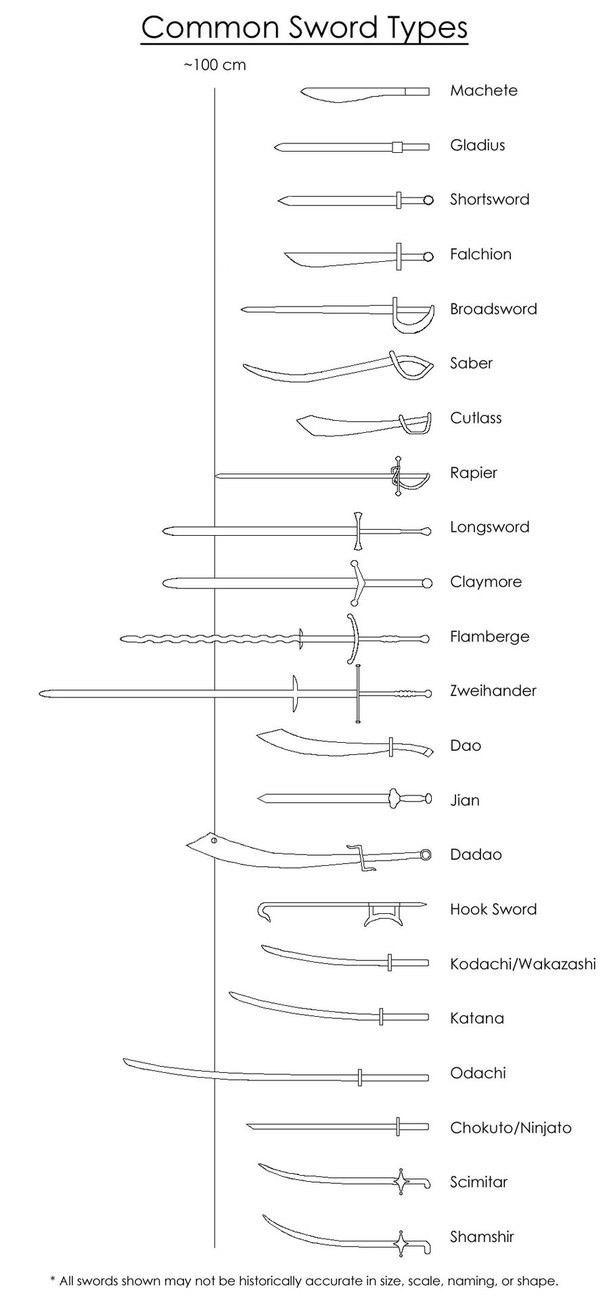
P. S. And remember, only by changing their consumption — together we change the world! ©
Join us in Facebook , Vkontakte, Odnoklassniki
Source: vk.com/gnezdo_paranoika?w=wall-38598449_111924
With the early iron age, iron gradually replacing the Knife blades, made of bronze. With the beginning of the industrial revolution cottage industry factory knives is replaced, changing the design and materials of blades. One of the important criteria are effectiveness and cheaper cost. The flowering begins folding knives. Very soon, the old traditional centers of production knives are added, such as Sheffield in England, Solingen in Germany, Mora in Sweden, Zlatoust in Russia.
Part of the knife
The knife consists of a blade (1) and the handle (2).
If blade to its end of the wedge converges at a single point, then this point is called the tip of the blade (3).
The sharp side of the blade is called the blade (4) or cutting edge.
The blade is smooth (plain) or sawtooth (serrated blade, serrated). Surface tapering towards the blade portion of the blade is called downhill (5).
The side opposite the blade, is called the butt of the blade (6).
Sometimes on the side (solomani) of the blade perform the grooves — grooves (7).
Statoconia of the blade adjacent to the handle, called the heel of the blade (8).
Sometimes between the blade and handle is Garda (9) (from FR. garde — protection), which protects the hand.
Of the blade inside the handle and which in any way is attached to the handle is called the shank of the blade. On
main methods of mounting the handle clumsy knife: Vidnoe when the handle longitudinal hole is placed on the shank and the plate, wherein the handle formed by plates, fastened on two sides to the shank, repeating the shape of the handle (full-tang).
Part of the handle on the palm side and the butt of the blade is called the back, opposite side from the blade is called the belly of the handle. Farthest from the blade part of the handle is called the head (10).
Sometimes the head of the arm making the hole in which passes the strap (11).
The side profiles of the blades
The form can distinguish the following main types of blades:
1 — a straightback Blade adapted for cutting and capable of piercing the tip.
2 — lower line of the butt (drop-point) the Tip is on the axis of application of force during an injection, the blade is equally good cuts and splits. The blade is a bit lighter blade of the same length without decreasing the line butt. On the front of the butt sometimes either "falshlezvie", formed by descents without the sharpening, or the second full blade that helps the blade at a prick to enter into the material being cut.
3 — with an increase in line butt (trailing point) blade of this type the maximum length of the blade, which is useful when cutting materials unsteadily. Some national knives with a blade of this type has the butt of sharpening.
4 — blade type "Bowie" (clip point) made In the butt bevel "pike" approaching the tip to the line of application of force during the shot. This blade is similar to the type of drop-point, but with a more subtle, chilobrachys tip. Bevel butt can also take the Shiv. Knives with blades of this type are especially popular in the United States.
5 — blade type "goat's foot" Straight blade makes the blade adapted to accurately controlled cutting. The absence of the tip makes it impossible to puncture, but the Knife safer. Sometimes this form is found in multidisciplinary folding knives.
6 — blade, type "tanto" is Historically derived from Japanese knives, has recently become quite popular, especially in the embodiment of the "American tanto" when the cutting edge is formed by the slopes with only one side of the blade (the so-called "stamana sharpening"). Blade is handy for some cutting action, while the power injection less likely to chip the edge. Often used on combat knives.
7 — kopeobrazny blade (spear-point) the Tip is located on the middle line is often a double-edged blade. Most often used on the daggers and knives that are more suitable for injection than for the cut.
Section blades
In the form section we can distinguish the following main types:
1 — straight from the butt wedge (triangular in cross-section of the blade) Due to the small corner of the cutting edge and the flat area of the blade is perfect for cutting. The weight of the blade is slightly smaller than the blade, with slopes not over the entire width. For chopping action poorly adapted due to the lower strength of the thin cutting edge. Requires quality materials and thermomechanical processing.
2 — blade with straight slopes Like a blade type 1, but the cutting edge is formed by a blunt angle, which gives greater strength and durability with the deterioration of the quality of the cut.
3 — blade with concave (shaving) slopes Helps to achieve a particular subtlety to the cutting edge with a thick and durable butt. Threat used on razors and knives, where you want the sharpness of the blade. Sometimes the concavity of the slopes due to technological reasons (slopes are cylindrical rotating cutting tool).
4 — blade with convex (lenticular) descents Blade special strength in hacking attacks.
5 — "double wedge" One of the ways of reaching a compromise between ease of cutting, durability of the blade and durability of the cutting edge. In this form the blade becomes easier sharpening of the knife, since removed, only a small width of material of the blade.
Sheath
The sheath (always plural) — a kind of sheath for a knife. Design difference of the sheath from other types of covers that are the Scabbard of the vagina, in the mouth of which is inserted the Knife blade forward.
The sheath is intended to ensure:
- the ability to carry, storage and transportation of the knife, without likelihood of loss
- the safety of the user when wearing the knife
- protection of the knife from damage
- the comfort of wearing the knife and the ability to quickly bring it into working position
- The sheath can include the following components:
- case, open on one side (this end of the sheath is called the mouth)
- loop, hook, clip, cord or other item, providing a suspension (fixing) of the sheath when wearing, storing or transporting a knife
- set of sheath, made typically from metal and includes oboimina and tip
- solid cladis, guide the blade while inserting the knife into the sheath that protects the wall material of sheath from the cut made by blade, not giving the sheath to bend
- closure with buttons, Velcro, etc. the locking Knife scabbard
The materials used in the manufacture of knives
Currently, the blades of the knives are made most often of carbon or alloy steel, subjected to special thermomechanical processing. For blade steel important properties such as hardness, toughness, wear resistance, corrosion resistance, etc. recently a notable interest in the use of steels with a very uniform structure (e.g., "powder" CPM-steel), which leads to greater material strength, or, conversely, to the formation of irregularities — solid viscous structures in the matrix material (Bulat and Damascus — the "patterned steel"). We are looking for a new materials known Knives with blades made of ceramics, cobalt-chrome and titanium alloys, composite materials, etc.
The handle used wood, metal, leather, rubber, many synthetic materials.
Classification of knives
Design:
- clumsy knives (blade and handle connected still)
- folding knives (in the off position, the blade hidden in the handle)
- knives with a detachable (replaceable) blades
Weapons
- fighting knives are designed to engage the enemy in combat and special operations. Sometimes separately allocated tactical knives (including folding), this name provides for the possibility of their application in quality combat.
- knives for self defense
- throwing knives — a special kind of missile weapon, or a throwing of shells.
- hunting knives — large group of knives used for hunting, may include such varieties as knife for killing game, skinning Knife (Skinner), camp knife etc.
- knives for fishing. Gutting and cutting fish as well as auxiliary operations during the fishing impose additional conditions on the design of the knife, one of the characteristic fishing knives fillet knife with non-slip handle.
- tourist knives — knives heterogeneous group, United by the possibility of use of nature.
- knives-machete is designed for cutting branches, bushes, cane, etc.
- survival knives — Knives with a set of tools and equipment are placed usually in a hollow handle for survival in extreme conditions.
- knives everyday carry or EDC knives (from the English. Every Day Carry — every day carry) — relatively light and easy to carry knives that are adapted for different actions (from household to self-defense).
- multitools (eng. multitool — multi-instrumental) — universal folding Knives with lots of tools.
- kitchen knives — large group of knives designed for cooking. Emit fruit, potato, fillet, bread knives, Knives for cheese, butter, etc.
- Cutlery knives included in the Cutlery along with fork and spoon.
- special knives — knives designed for any special activities, for example, surgical knives, butcher's knives, diving Knives, etc.
Among the folding knives are allocated automatically, in which the blade is in working position is driven by the force of the cocked spring, or other mechanism, and inertia, in which the opening is made by rotation of the hand holding the knife. Also take into account the presence or absence of locking of the blade in the open state.
Knives with a lock are classified according to the type of the lock: liner lock, back lock, axis lock, etc.
National, traditional, and legendary knives
Central Asia
- Pcak (pechak) — Knife with a wide blade is traditionally made of carbon steel, formed by cold forging, a straightback and a narrow handle that is attached at the level of the butt.
Finland
- Puukko — the Finnish utility Knife with a small blade, the butt is straight, sometimes down to the point (drop-point and clip-point), the handle is usually without guard.
- The Leuk — the North (Sami) blade, fitted to the main works in forest-tundra and tundra zone, with a blade of medium to large size.
- A Finnish knife — the knife is Russian, derived from the Finnish puukko, traditionally considered to be weapons (usually marginal elements and criminals). Characterized by the presence of the bevel butt (clip point), developed the cross guard.
- Parenski knife — the traditional and the knife made in the village Guy on the Kamchatka Peninsula.
- Zasapozhnye knife — legendary Knife of the XII century, worn over an ankle boot.
- Swiss army knife — a small folding knife multi-instrumental.
- Opinel — odnotonovye traditional folding Knife with a wooden handle
- Liol traditional folding of single - and multi-disciplinary knife
Spain
- The Navajo is one of the first folding knives in the world.
- •Skin do a small Knife (in a different classification of the dagger) is worn over the garter of course.
- Bowie (Bowie, bowie) is a Legendary knife, named after its Creator, James Bowie (James Bowie). Constructed in the early nineteenth century as a fighting (dueling blades). The relatively large blade with a bevel butt (clip point) and developed Garda.
- Arkansas toothpick combat Knife giant size, wear behind the back diagonally.
- Ka-bar combat Knife blade type "Bowie", well-developed guard and leather handle. Widely known after the Second world war. The name comes from the manufacturer KA-BAR Knives, Inc.
- Spyderco — Spyderco firm (USA) manufactures high-tech folding Knives with a lock. Traditional knives feature was the presence of round holes in the blade, which the blade open with your thumb holding the Knife hand.
- "Rambo knife" — a knife that combines the functions of combat and survival knife. The total length is about 400 mm. Blade type "Bowie" on the butt of the blade made the saw with big teeth. Developed the cross guard. Hollow-handle survival kit in extreme conditions. Gained popularity after the release of the film series "Rambo" with Sylvester Stallone in the title role. Actual application of properties of a knife artistically exaggerated.
- Machete — a knife with a long blade, suited for cutting.
- Tanto is a short dagger shaped repeating katana or wakizashi
- Aykuti knives, blade length which usually is small: 10-20 cm
- Kuangou Knife for seppuku (harakiri).
- The kerambit — a knife with a sickle-shaped blade, sharpened on the inner side and ring finger on the head of the arm.
- Chris — a Knife or dagger asymmetrical shape. The most famous varieties of wavy Chris.
- Bolo — a kind of a blunt machete
- Balisong (butterfly) Knife with an inertia opening. Was fairly widespread in Europe since the XVII century, but is now known as Filipino knife.
- Card — knife with a straight relatively narrow blade without guard.
- Kukri (khukri) is a traditional fighting and utility Knife of the Nepalese Gurkhas, with Crescent shape blade with extension in the middle and narrowing to the tip.
- Ulu (Ulak, pecol) — eskimo Knife Crescent shape with a handle attached directly on the butt.published

P. S. And remember, only by changing their consumption — together we change the world! ©
Join us in Facebook , Vkontakte, Odnoklassniki
Source: vk.com/gnezdo_paranoika?w=wall-38598449_111924
